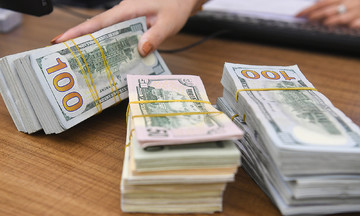One EUR currently buys 1.179 USD, the highest since September 2021. In the first half of the year, the euro rose 13.8% against the USD. This is the strongest first-half gain in the currency's history, according to data from financial services firm LSEG.
The British pound is nearing the 3.5-year high set last week, at 1.3737 USD. The Japanese yen also strengthened, with one USD now worth 143.68 JPY. In the first half of this year, the yen gained 9% against the USD, its best performance since 2016.
The Dollar Index, which measures the USD against six major currencies, is currently at 96.68 points. This is the lowest level since February 2022. In the first half of the year, the USD lost more than 10% of its value.
 |
The Dollar Index has been declining since the beginning of the year. Graph: Market Watch |
Investors are concerned about the fiscal risks from US President Donald Trump's tax cut and spending bill. Republican Senators are trying to pass the bill, despite internal divisions about its impact. Analysts estimate the package could add 3,300 billion USD to the US national debt. Trump wants the bill passed before the July 4 national holiday.
Uncertainty about the possibility of the US reaching trade agreements with other countries is also weighing on investor sentiment. The 90-day import tariff postponement expires next week.
In addition, investors have begun betting on the possibility of the US Federal Reserve (Fed) accelerating the process of monetary easing this year. This has further accelerated the USD sell-off.
"There are many reasons for investors to turn their backs on the USD. Some are structural, such as erratic trade policy and fiscal risks," said Moh Siong Sim, a currency strategist at Bank of Singapore. He believes these factors have weakened the USD previously. Now, the possibility of the Fed easing policy more aggressively is further weakening the currency.
In recent months, the USD has repeatedly lost value amid shaken investor confidence in the US economy. Both the USD's reserve currency status and its safe-haven appeal are being challenged.
"In 2025, the outperformance of the US economy is being questioned. Demand in recent US government bond auctions has declined," said Nathan Hamilton, an investment analyst at Aberdeen Investments.
Meanwhile, this week the US president continued to pressure the Fed to ease policy. He sent Fed Chairman Jerome Powell a list of interest rates from central banks around the world, along with the observation that US rates should be somewhere between Japan's 0.5% and Denmark's 1.75%. This has further worried investors about the Fed's credibility and ability to operate independently.
Ha Thu (according to Reuters)












